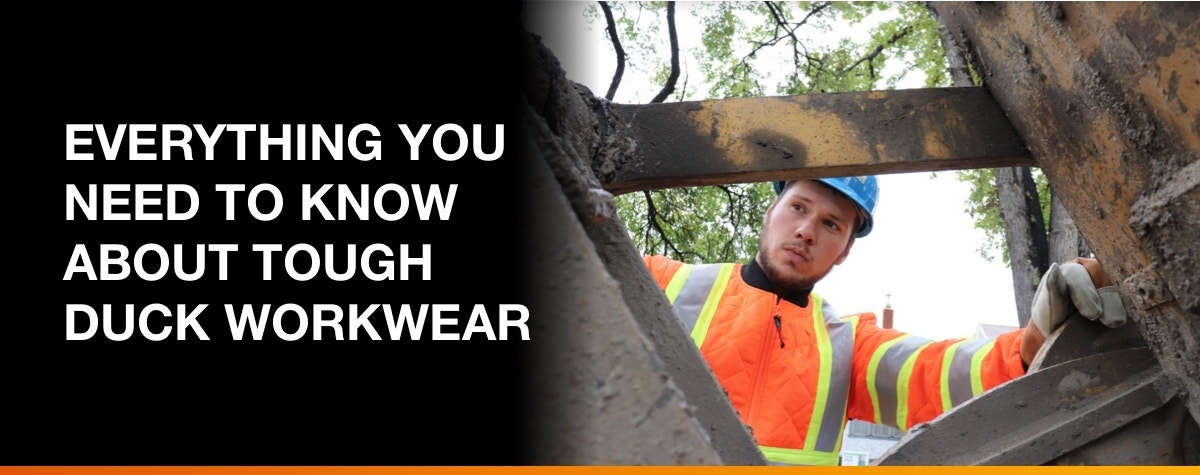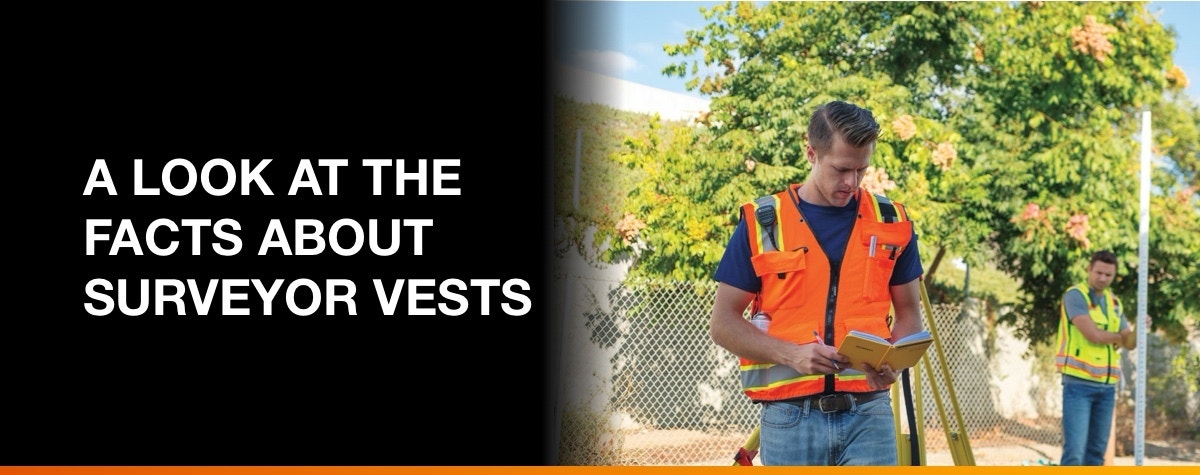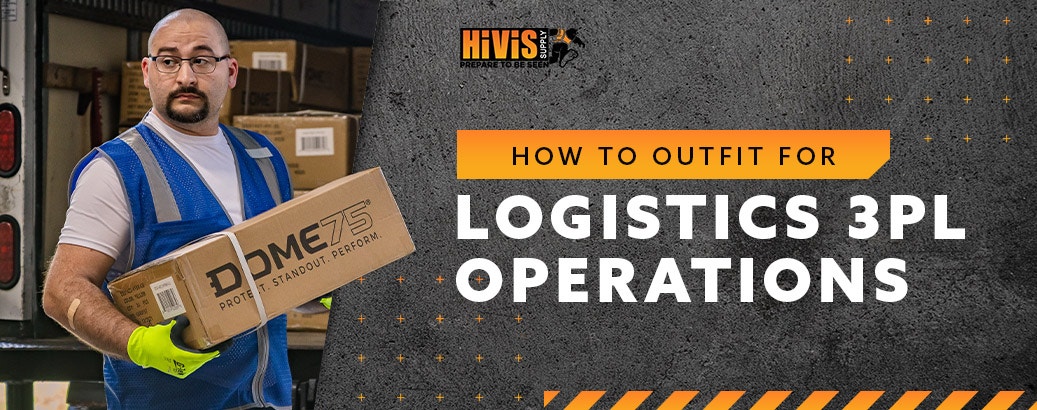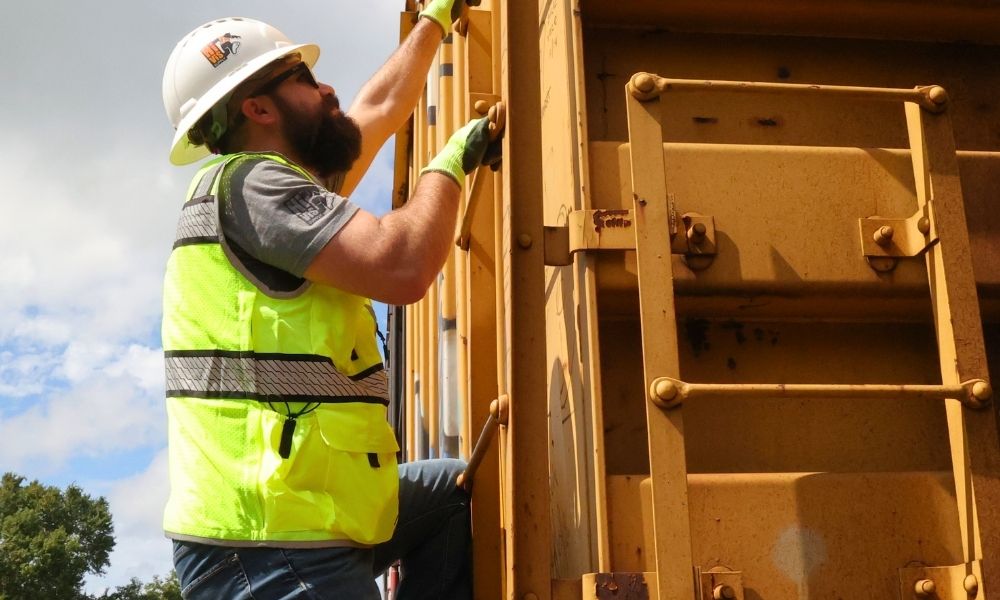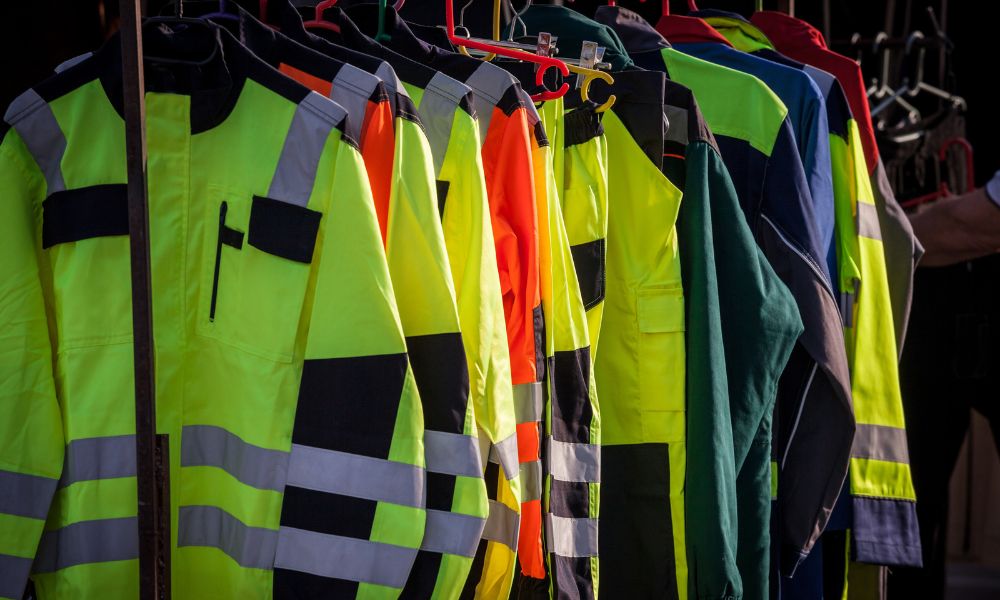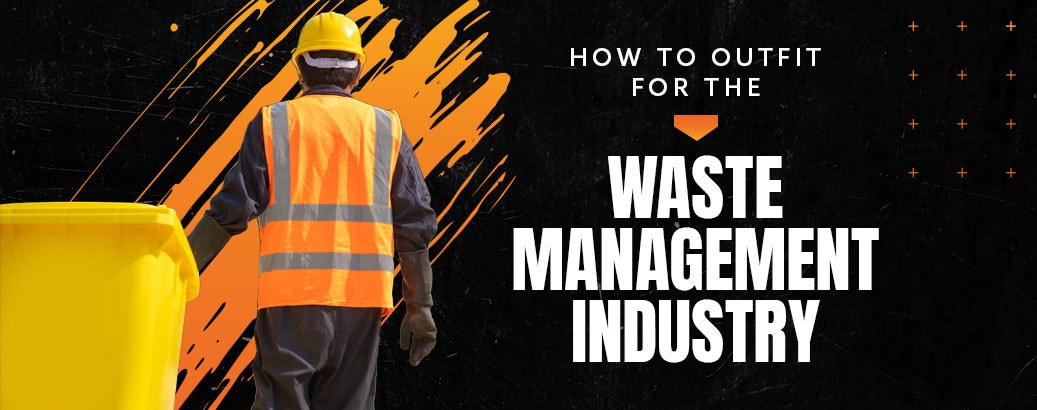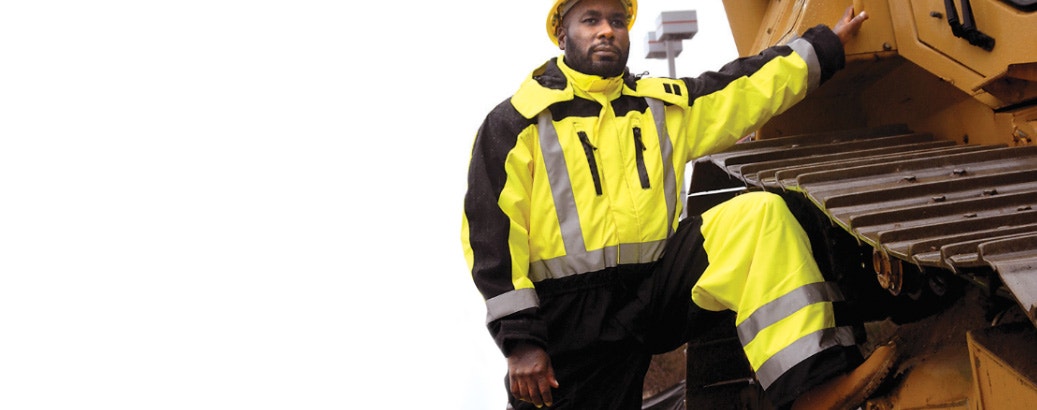Understanding Dual Performance High Visibility FR Clothing
- By HiVis Supply
- Nov 4, 2020
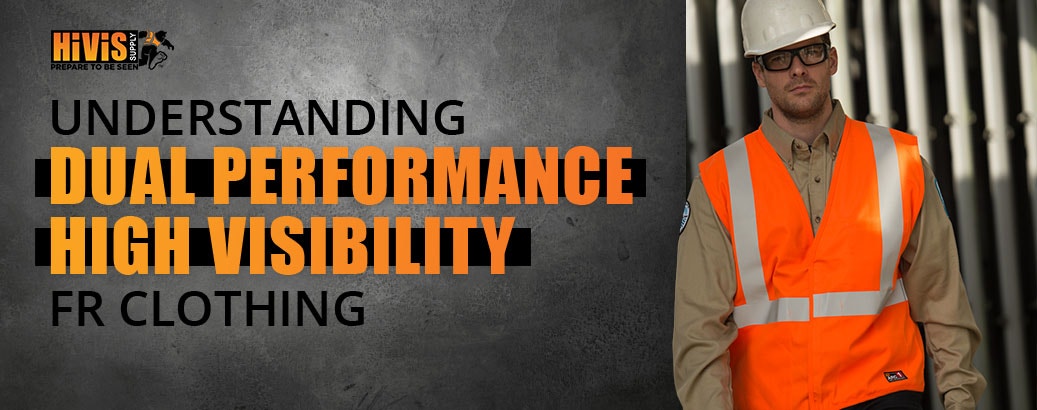
The changing complexity of today’s work environment often requires seemingly competing safety requirements. Being seen on the job is key to alerting everyone around you of your presence. However, many job functions can often expose you to hazards from flash fire or electrical arc flashes. Each presents its own unique challenges and dangers. So when it comes to choosing the right safety gear, you cannot settle for an either/or solution. If there are multiple safety gear requirements, the only way to work safely is to follow all of them. That’s exactly why we have dual performance high-visibility FR clothing.
High-visibility clothing and fire-resistant (FR) clothing are two common requirements for workwear in all kinds of industrial and skilled trades jobs. If your job requires both, you need safety gear that’s designed to comply with both high-visibility and FR standards. There is workwear available that offers no-compromise dual performance.
In this article, we’ll look at how a new generation of workwear has been designed for both high-visibility and FR performance. We’ll talk about the most important standards for high-visibility and FR clothing and what you should look for when evaluating dual performance clothing. And, of course, we’ll show you some of the top dual performance high-visibility and FR clothing options available today.


What Is Dual Performance High-Visibility FR Clothing?
Dual-performance high-visibility FR clothing incorporates two different kinds of protective gear into a single type of safety workwear:
- High Visibility Safety Apparel (HVSA), designed to make the human body easy to see in potentially hazardous environments
- FR Clothing (FRC) and Arc Flash PPE, designed not to catch fire when exposed to extreme heat from flash fires or electrical arc flashes
Dual-performance clothing is available in a wide variety of types, from hi-vis FR shirts to full-body hi-vis FR coveralls. This specialized type of safety gear can be critically important in certain workplaces. Let’s take a look at whether your workplace might be one of them.
Does My Workplace Require Dual Performance High-Visibility FR Clothing?
Workers in many different jobs need both high-visibility and FR clothing. These jobs combine factors such as working around heavy machinery or high-speed traffic, in addition to possible exposure to sources of flash fires or electrical arc flashes. Some of the most common applications for this type of PPE include:
- Commercial and industrial electricians
- Oil and gas industry workers
- Chemical plant workers
- Electric utility line workers
- Welders and metal fabricators
Other types of jobs may also require dual performance clothing as well. OSHA gives most employers some flexibility in deciding exactly what kind of protection is appropriate for their job site. However, that makes it even more important for employers to understand the potential hazards within their work environment; and be familiar with industry standards and best practices.


The guiding principle for employers deciding on PPE for their workers should be the “general duty clause” in the Occupational Safety and Health Act. The general duty clause says that employers have a general duty to guarantee "employment and a place of employment which are free from recognized hazards that are causing or are likely to cause death or serious physical harm to [their] employees.”
In other words, it’s the employer’s job to use their best judgment to provide or require the gear that will protect their employees. If that means that dual performance workwear is the right choice for your workplace, read on to learn about what you should look for in your workwear choices.
What Should You Look For in Dual Performance Workwear?
Everyone will need something a little different out of their dual performance high-visibility FR workwear, but there is a set of common factors that most workers will be looking for, including:
- Compliance: Your dual performance workwear should be compliant with ANSI 107 high-visibility and NFPA 2112 FR standards. We’ll examine these standards and what they mean in the next section. You should also always check to ensure that the workwear you’re buying is compliant with other relevant company uniform policies.
- Comfort: Uncomfortable workwear is an annoyance at best and a dangerous distraction at worst. Dual performance garments should fit snugly without rubbing or being too tight. Features like fleece or microfiber linings can make workwear more comfortable and pleasant to wear throughout the day.
- Waterproofing: Rain or snow can quickly turn a workday wet and uncomfortable, so many workers who work outdoors need waterproof workwear. Waterproof fabrics are a great start but, for true watertight performance, other areas like the zippers also need to be waterproofed.
- Features: The right workwear will have features that make your job easier. Extra pockets are extremely popular features that help workers keep all of their tools and devices close at hand. Microphone tabs are other great features that make it easy to communicate hands-free on the job.
- Style: While your workwear’s protective qualities are obviously more important, it’s still enjoyable to have work clothes that look as good as they feel and perform. You’ll find both modern and classic designs in today’s best dual performance workwear, making it easier to find the perfect style for you.


ANSI 107 Performance Classes for High-Visibility Clothing
The ANSI High-Visibility performance class rating system, also known as ANSI 107, is the most common rating system for high-visibility clothing. This rating system establishes the required specs for the amount, type, and design of the high-visibility and reflective materials in hi-vis garments. There are two major components to the construction of HVSA - fluorescent background material and retro-reflective striping.
The ANSI 107 standard comprises three major types, based on intended work environment, and then further categorized into five performance classes based on the level of improved visibility that each one provides for the worker. The ANSI 107 standard recognizes three major types of work environments:
- Type O: Off-road environments
- Type P: Public safety environments, for first responders such as law enforcement and firefighters
- Type R: Roadway environments
Additionally, within each work environment, there are recommended visibility performance classes based on the potential hazards and needs of the wearer for visibility. Some performance classes can be used across various environment types; while others may only be acceptable for a single environment type. The ANSI 107 performance classes include:
- ANSI Class 1 (Type O): These are the most basic level of ANSI-rated high-visibility protection, for laborers working away from roadways and in environments where equipment speeds don’t exceed 25 mph.
- ANSI Class 2 (Type R or P): The middle level of ANSI-rated visibility protection is for laborers who work on or near roadways, with traffic above 25 mph, and who may be working in a complex visual environment.
- ANSI Class 3 (Type R or P): The highest level of ANSI-rated visibility protection is for workers in high-risk environments where they’re exposed to fast-moving traffic and need their full range of body motions visible from no less than 1,280 feet.
- ANSI Class E: These high-visibility garments, when combined with ANSI Class 2 clothing, provide a total performance rating of ANSI Class 3. They can also be worn with ANSI Class 3 garments to provide extra visibility. By themselves, however, ANSI Class E garments do not provide the required visibility performance to meet either ANSI 107 performance Class 2 or Class 3.
- Enhanced Visibility Accessories: These high-visibility accessories, such as hi-vis hats, are designed to provide increased worker visibility; but by themselves do not meet any ANSI-rated performance classes for high-visibility protection. However, they can certainly help make work more comfortable and increase visibility under some conditions.


FR Clothing Ratings
When considering the appropriate FR protection you must keep to mind that there are varying compliance standards based on the type of FR hazard. The NFPA 70E is the standard which focuses on electrical safety within the workplace; whereas the NFPA 2112 is the standard for flame-resistant clothing for protection against flash fires. Although these may sound very similar, they actually provide guidelines for safeguarding workers from two very different hazards - industrial flash fire hazards or protection from thermal hazards of an electric arc. Selecting the right FR safety garment is not a one size fits all scenario of choosing simply based on one standard. It is absolutely imperative that you understand what type of FR hazard risk you may potentially be exposed to and then select your garment based on the appropriate standard.
NFPA 2112 is an industry standard on flame resistant garments for protection of industrial personnel against flash fire. NFPA 2112 provides minimum performance criteria and sets clear guidelines for testing garment performance. It is important to note that the NFPA 2112 standard only requires pass/fail test of FR materials; and not the completed FR garment themselves. Flash fire hazards are most commonly found in the petrochemical and oil/gas industries.
The Hazard Risk Category (HRC) system, established by NFPA 70E, is the most common rating system for FR clothing protecting against thermal hazards due to electric arc flashes. This system divides FR workwear into four categories based on the expected risk level of worker exposure to arc flashes or flash fires.
The HRC system provides an at-a-glance method for determining the kind of FR protection that a garment offers. It’s based on another unit of measurement called calorie ratings (unit of heat energy).
An FR garment receives a calorie per cm2 rating as an approximate measure of the heat protection that it provides. The heat of an arc flash can also be measured in calories, which means that we can use that to determine the HRC protection rating that a worker needs from their workwear. The calorie values of the four HRC levels are:
- HRC-1: 4 cal/cm2 – 7.9 cal/cm2
- HRC-2: 8 cal/cm2 – 24.9 cal/cm2
- HRC-3: 25 cal/cm2 – 39.9 cal/cm2
- HRC-4: 40 cal/cm2 – and up
Note that an HRC rating provides a relatively wide range of cal/cm2 values. Before purchasing FR clothing, it’s important to perform arc flash calculations, a flash fire risk analysis, or other relevant studies to learn about the potential heat levels that might be created in an arc flash or flash fire event. This information can help determine the specific cal/cm2 that your workplace PPE needs.
High-Visibility FR Clothing from HiVis Supply
HiVis Supply works hard to stay on the cutting edge of hi-vis workwear, and our selection of high-visibility FR clothing is the perfect example of how we provide our customers with the best. Each one of these pieces is designed according to ANSI 107 and NFPA 2112 standards to create professional-grade protection:


- Neese VM7CA3 Class 3 HiVis FR HRC-2 Normex Safety Coverall
- ANSI Class 3, Type R
- HRC-2
- These dual-performance coveralls offer the perfect level of full-body protection. Their advanced modacrylic fabric has inherent FR qualities and holds up extremely well to repeated wear. Seven double-stitched pockets provide tons of room for all of your work essentials, and an action back design helps your body keep its full range of motion while on the job.


- National Safety Apparel Hydrolite Class 3 FR Extreme Weather Kit HRC-3
- ANSI Class 3, Type R
- HRC-3
- If you need a combination of full-body visibility in rainy conditions and flame-resistant performance, this lightweight hi-vis raingear kit is the smart choice. A combination of rain jacket and bib overalls provide excellent coverage without weighing you down, and the GORE-TEX PYPAD material is designed for ultra-fast drying and a flexible feel. Add in awesome features like a covered D-ring opening for fall protection and fleece-lined pockets, and you’ve got a sure-fire job site performer.


- National Safety Apparel 99223 Arc-Rated FR Cotton Utility Safety Vest
- Non-ANSI-rated
- HRC-2
- The 99223 is a high-quality utility FR safety vest that’s perfect for job sites that don’t require ANSI 107 compliance but need FR protection and additional visibility in a simple package. This practical and comfortable design comes equipped with numerous pockets, 3M Scotchlite™ striping, built-in mic tabs, and a spark-resistant zipper closure.


- National Safety Apparel BSTJTRC2 Class 2 FR Control 2.0 Base Layer Tee
- ANSI Class 2, Type R
- HRC-1
- National Safety Apparel has reinvented the FR T-shirt, packing ANSI Class 2 and HRC-1 performance into a modacrylic tee that stretches to fit your body comfortably. This model even goes the extra mile with its antimicrobial moisture control fabric that helps banish odors and control perspiration for an all-around more comfortable working experience.


- ML Kishigo F594 Class 3 HiVis FR HRC 2 Long Sleeve Henley Safety T-Shirt
- ANSI Class 3, Type R
- HRC-2
- We also offer excellent long-sleeve tee options like the ML Kishigo Henley. This shirt’s modacrylic fabric uses a light and breathable knit weave to create outstanding comfort, and its black highlights provide a cleaner look even when you’ve been hard at work all day. And with a button-up neck front, rib-knit cuffs, and a chest pocket, it’s got all of the small but important features that make for great workwear.


- ML Kishigo F442 Economy Class 2 FR Safety Vest HRC-2
- ANSI Class 2, Type R
- HRC-2
- An economical yet high-performance addition to ML Kishigo’s safety vest lineup, the F442 is made from an advanced modacrylic mesh fabric. Its design includes multiple inner pockets, FR-rated reflective striping, and a front hook-and-loop closure to make donning and removal easy.


- ML Kishigo F407 Black Series Class 3 FR HiVis Sweatshirt HRC-2
- ANSI Class 3, Type R
- HRC-2
- At the junction of style and safety, you’ll find ML Kishigo products like the F407 hi-vis sweatshirt. This sweatshirt is crafted from a light and comfortable modacrylic fabric that offers serious hazardous-environment protection compliant with both ANSI and FR standards. The F407 also features stylish black accents and a soft fleece inner lining that combine to make it both visually appealing and comfortable to wear.


- Portwest FR94 Iona BizFlame 88/12 Enhanced Visibility FR Coverall HRC-2
- Not ANSI-rated
- HRC-2
- An economical and comfortable solution for enhanced visibility FR coveralls, the Iona BizFlame coveralls are ideal for workers in many different hazardous industries. They’re available in a full range of colors for easy personnel identification and feature a total of eight pockets as well as built-in mic tabs.


- Bulwark SLB4 Class 3 Color Block Uniform Shirt HRC-2
- ANSI Class 3, Type R
- HRC-2
- Looking for a professional style for your dual performance workwear? The Bulwark SLB4 FR is a classic button-down style made from a flame-resistant blend of cotton and Nylon. Workers who need a clean-cut look will love the two-color design that helps hide stains and keeps you looking sharp, as well as the top-stitched collar and gusseted seams that help prevent untucking.


- Neese 207AJ Class 3 PetroArc HiVis HRC 2 FR Neoprene Nomex Safety Rain Jacket
- ANSI Class 3, Type R
- HRC-2
- The 207AJ is a new step forward for FR high-visibility rainwear. Crafted from Nomex Neoprene that provides superior breathability and resistance to environmental hazards, this model also includes convenient features like a D-ring opening, adjustable cuffs, and a waterproof storm front flap with a hook and loop closure.
Caring for High-Visibility FR Clothing
High-visibility and FR clothing will usually come with specific instructions on how to clean, store, and generally care for it. You’ll find this information either in the documentation that comes with the garment or in a tag inside the garment. In general, here are some directions that will help you care for your high-visibility FR clothing:
- Never use bleach, fabric softeners, starches, or other laundry additives when washing FR clothing unless specified by the manufacturer. These chemicals can damage or cling to the fibers of FR clothing and compromise their flame resistance.
- Use standard liquid detergents, warm or hot water, and a normal wash cycle.
- Dry either on a low tumble dry setting or hang dry, depending on the manufacturer’s recommendations. If you use a dryer, remove your garments immediately after they dry.
- If your water has a pH over 8.5—so-called “hard water”—consider using water softeners to prevent mineral buildup in the fibers of your FR clothing.
For more resources on caring for your FR workwear, see our guide to washing FR clothing.


While you’re exploring the world of dual performance FR clothing, remember to check out our full selection of hi-vis workwear. You’ll find all of the hi-vis gear that will help make your workdays the safest and most productive you’ve ever had.


